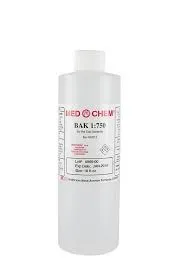polyaluminum chloride water treatment
Polyaluminum Chloride in Water Treatment An Overview
Water is an essential resource that sustains life, industry, and agriculture. However, increasing pollution levels and the growing demand for clean water have necessitated advanced treatment processes to ensure water safety and quality. One such chemical that has gained prominence in water treatment is Polyaluminum Chloride (PAC). This article delves into the composition, mechanisms, benefits, and application of PAC in water treatment processes.
What is Polyaluminum Chloride?
Polyaluminum Chloride is an inorganic polymer coagulant formulated from the hydrolysis of aluminum chloride. It exists in various forms, including liquid and powder, and can be adjusted to achieve desired performance characteristics. The concentration of aluminum and its polymeric nature enables PAC to enhance its coagulation and flocculation properties, making it effective for purifying various types of water.
Mechanism of Action
The primary function of PAC in water treatment is to promote coagulation and subsequent flocculation. In the coagulation process, PAC dissociates in water to form aluminum hydroxide and other species that neutralize the negative charges of colloidal particles, such as silt, clay, and organic matter. This neutralization reduces the electrostatic repulsion between particles, allowing them to collide and bond together to form larger aggregates, or flocs.
During flocculation, these larger flocs settle out of the water column, facilitating the removal of suspended solids, turbidity, and other impurities. The settled flocs can then be easily removed through sedimentation or filtration. This two-step process is crucial for producing clean, safe water for consumption and other uses.
Advantages of Using Polyaluminum Chloride
1. Enhanced Coagulation Efficiency PAC's polymeric structure allows it to outperform traditional coagulants like aluminum sulfate. It requires less dosage to achieve comparable or superior results, making it more economical for large-scale water treatment facilities.
polyaluminum chloride water treatment

2. Better Performance in Variable Conditions PAC exhibits greater effectiveness across a range of pH levels and water temperatures. This adaptability makes it suitable for different types of water sources, including surface water, groundwater, and industrial effluents.
3. Improved Water Quality The use of PAC significantly reduces turbidity and total suspended solids, resulting in clearer water. It also helps eliminate taste and odor-causing compounds, thereby improving the overall aesthetic qualities of treated water.
4. Lower Sludge Production Compared to traditional aluminum salts, PAC generates less sludge, which reduces the costs and complexities associated with sludge management and disposal.
5. Environmental Benefits PAC is less toxic and poses fewer risks to aquatic life compared to other chemical coagulants. Its use contributes to more sustainable water treatment practices.
Applications in Water Treatment
PAC is widely used in municipal drinking water treatment plants, wastewater treatment facilities, and industrial water purification systems. In drinking water treatment, PAC removes suspended solids and pathogens, ensuring that the water is safe for human consumption. In wastewater treatment, PAC aids in the removal of contaminants before the treated water is discharged into natural water bodies or reused.
Moreover, PAC finds application in specific industries, such as paper manufacturing, textiles, and food processing, where water purification is crucial to maintaining product quality and environmental compliance.
Conclusion
Polyaluminum Chloride is an effective and versatile coagulant in the realm of water treatment. Its ability to enhance coagulation efficiency, adapt to various water conditions, and reduce sludge production makes it a preferred choice for many water treatment facilities. As global water quality challenges intensify, the ongoing use and refinement of chemicals like PAC will be essential for securing safe and clean water for all. The future of water treatment hinges upon continued innovations and research, with PAC likely playing a significant role in meeting these demands.
-
Water Treatment with Flocculant Water TreatmentNewsJun.12,2025
-
Polymaleic AnhydrideNewsJun.12,2025
-
Polyaspartic AcidNewsJun.12,2025
-
Enhance Industrial Processes with IsothiazolinonesNewsJun.12,2025
-
Enhance Industrial Processes with PBTCA SolutionsNewsJun.12,2025
-
Dodecyldimethylbenzylammonium Chloride SolutionsNewsJun.12,2025





